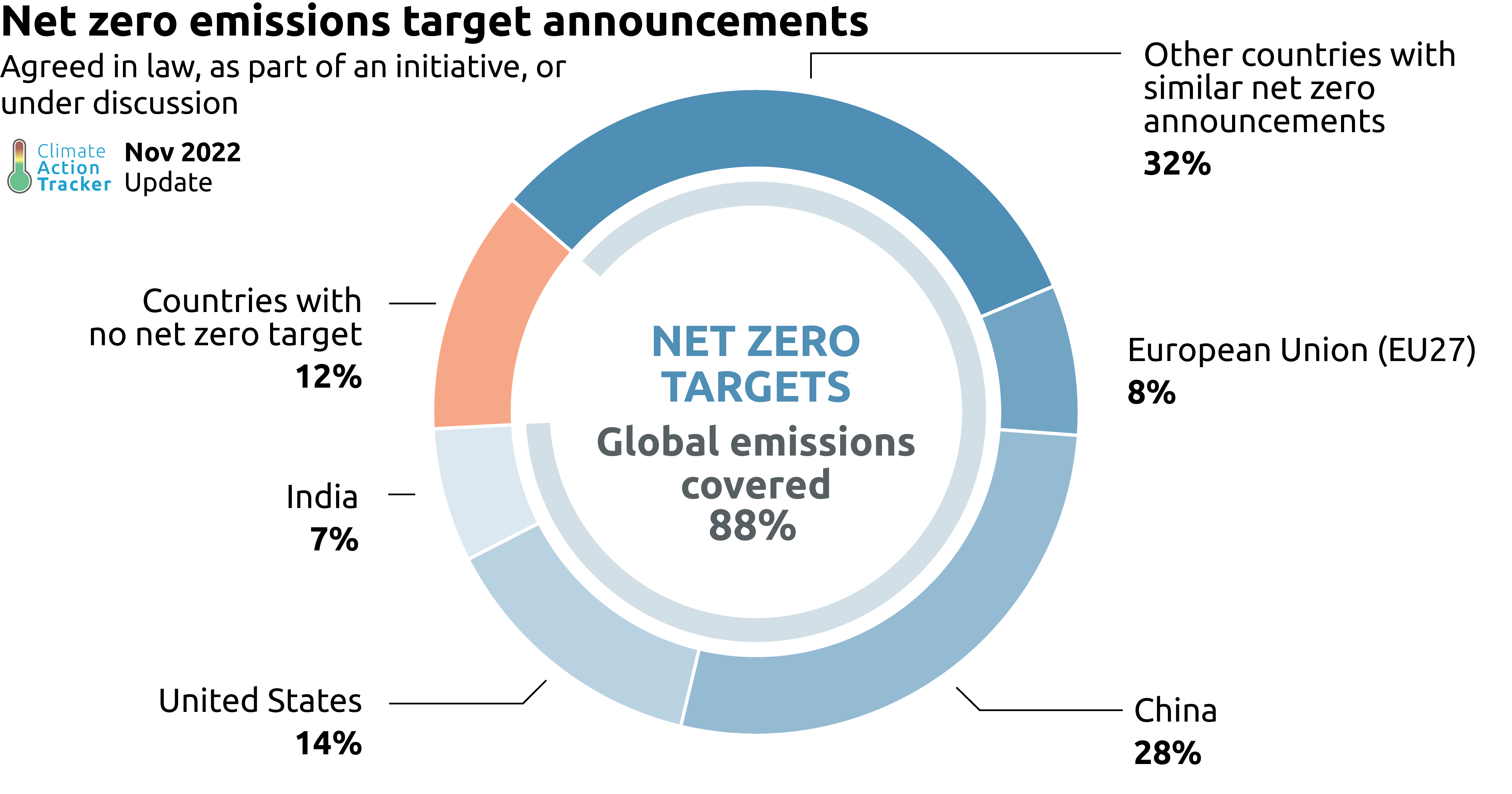What is net zero?
- Put simply, net zero means cutting greenhouse gas emissions to as close to zero as possible, with any remaining emissions re-absorbed from the atmosphere, by oceans and forests for instance.
Why is net zero important?
- The science shows clearly that in order to avert the worst impacts of climate change and preserve a livable planet, global temperature increase needs to be limited to 1.5°C above pre-industrial levels.
- Currently, the Earth is already about 1.1°C warmer than it was in the late 1800s, and emissions continue to rise.
- To keep global warming to no more than 1.5°C – as called for in the Paris Agreement – emissions need to be reduced by 45% by 2030 and reach net zero by 2050.

How can net zero be achieved?
- Transitioning to a net-zero world is one of the greatest challenges humankind has faced. It calls for nothing less than a complete transformation of how we produce, consume, and move about.
- The energy sector is the source of around three-quarters of greenhouse gas emissions today and holds the key to averting the worst effects of climate change.
- Replacing polluting coal, gas and oil-fired power with energy from renewable sources, such as wind or solar, would dramatically reduce carbon emissions.
Is there a global effort to reach net zero?
- Yes, a growing coalition of countries, cities, businesses and other institutions are pledging to get to net-zero emissions. More than 70 countries, including the biggest polluters – China, the United States, and the European Union – have set a net-zero target, covering about 76% of global emissions.
- More than 3,000 businesses and financial institutions are working with the Science-Based Targets Initiative to reduce their emissions in line with climate science.
- And more than 1000 cities, over 1000 educational institutions, and over 400 financial institutions have joined the Race to Zero, pledging to take rigorous, immediate action to halve global emissions by 2030.
- The top seven emitters (China, the United States of America, India, the European Union, Indonesia, the Russian Federation, Brazil) accounted for about half of global greenhouse gas emissions in 2020.
- The Group of 20 (Argentina, Australia, Brazil, Canada, China, France, Germany, India, Indonesia, Italy, Japan, Republic of Korea, Mexico, Russia, Saudi Arabia, South Africa, Turkey, the United Kingdom, the United States, and the European Union) are responsible for about 75 per cent of global greenhouse gas emissions.
How do we ensure commitments are turned into action?
- The growth in net-zero pledges has been accompanied by a proliferation of criteria with varying levels of robustness.
- To develop stronger and clearer standards for net-zero emissions pledges by non-State entities such as businesses, investors, cities and regions, and speed up their implementation, UN Secretary-General António Guterres in March 2022 established a High-Level Expert Group on the Net-Zero Emissions Commitments of Non-State Entities.
- The Expert Group presented its recommendations at COP27 on 8 November 2022.
Are we on track to reach net zero by 2050?
- No, commitments made by governments to date fall far short of what is required. Current national climate plans – for 193 Parties to the Paris Agreement taken together – would lead to a sizable increase of almost 11% in global greenhouse gas emissions by 2030, compared to 2010 levels.
- Getting to net zero requires all governments – first and foremost the biggest emitters – to significantly strengthen their Nationally Determined Contributions (NDCs) and take bold, immediate steps towards reducing emissions now.
- The Glasgow Climate Pact called on all countries to revisit and strengthen the 2030 targets in their NDCs by the end of 2022, but only 24 new or updated climate plans were submitted by September 2022.
Source: UN
Visit Abhiyan PEDIA (One of the Most Followed / Recommended) for UPSC Revisions: Click Here
IAS Abhiyan is now on Telegram: Click on the Below link to Join our Channels to stay Updated
IAS Abhiyan Official: Click Here to Join
For UPSC Mains Value Edition (Facts, Quotes, Best Practices, Case Studies): Click Here to Join
